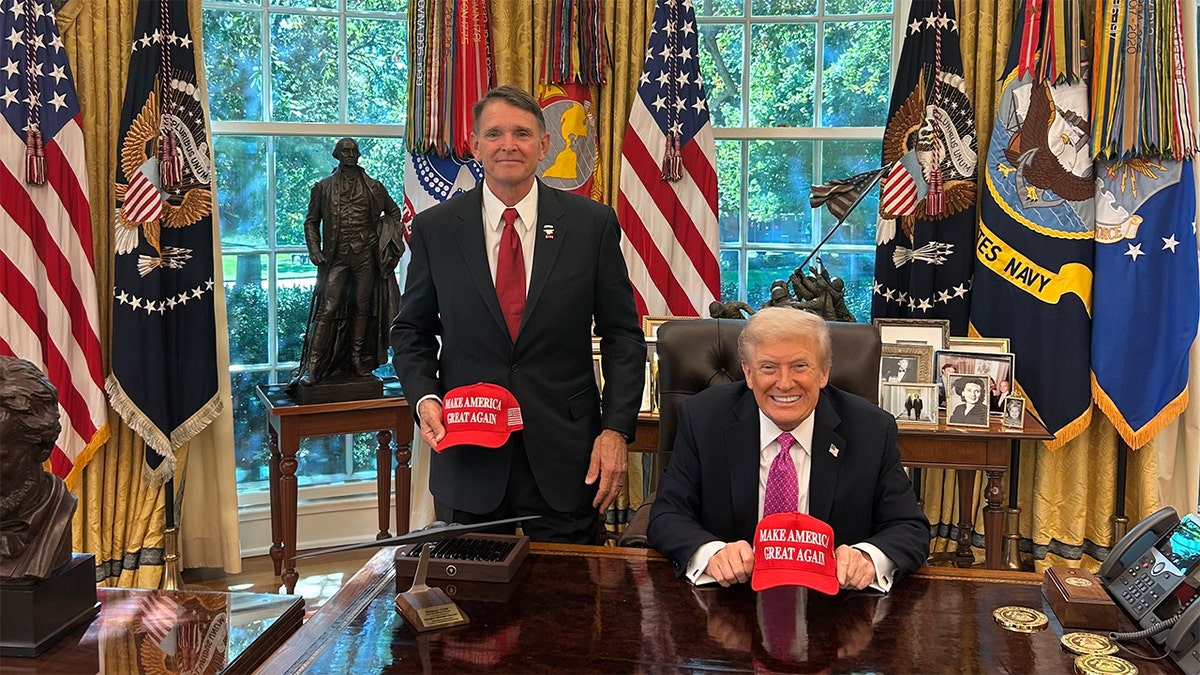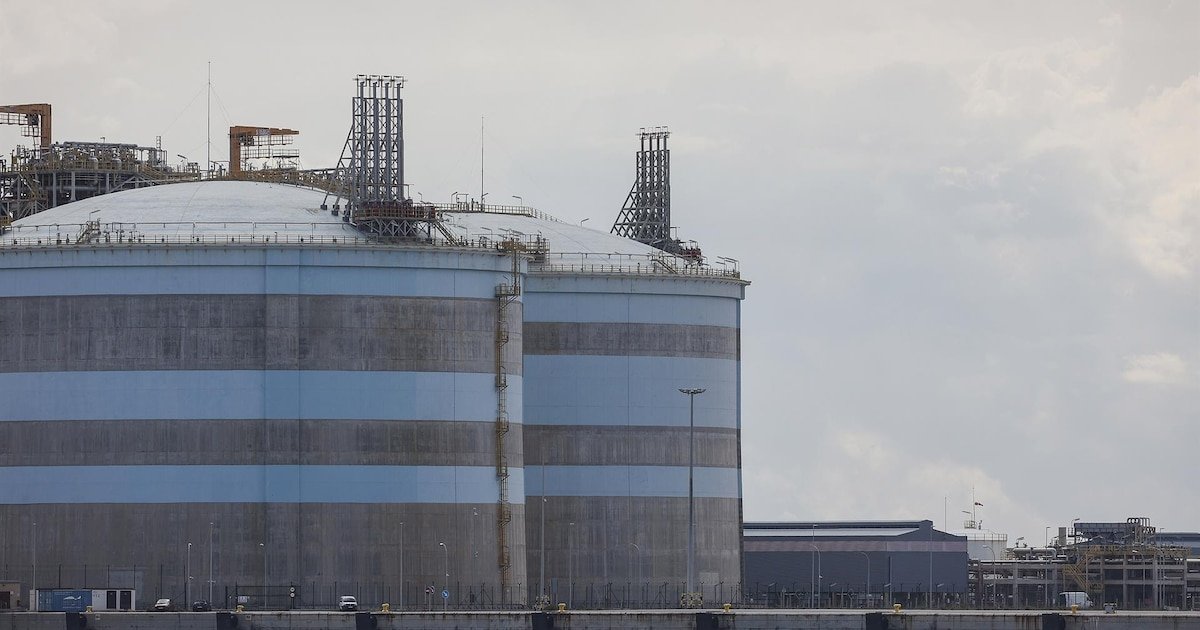INTERNACIONAL
Details emerge about freed Israeli hostages’ medical conditions, what they endured in captivity

NEWYou can now listen to Fox News articles!
Since the release of the last 20 living Israeli hostages in Gaza, details have started to emerge about their medical conditions and the horrors they endured while in captivity. Similar to previously released hostages, those who returned on Monday appeared thin, suggesting they were not adequately fed.
Avinatan Or, who was kidnapped from the Nova music festival alongside his partner, Noa Argamani, was reportedly starved during his captivity and lost 30-40% of his body weight, according to Israel’s Channel 12. The outlet also said official medical documents noted that Or was «thin and very weak.» Or was reportedly held in central Gaza in harsh conditions for most of the war, according to Channel 12.
Additionally, Or was reportedly held in isolation for over two years and did not encounter other captives until his release, according to The Times of Israel, which cited Israel’s Channel 12. He was also allegedly given little access to news and only learned of the IDF mission that led to the rescue of Argamani and three others after his release.
DR. MARC SIEGEL: FROM HORROR TO HOPE: WHAT GAZA’S FREED HOSTAGES TEACH A WEARY WORLD
Details about the hostages’ medical conditions and what they endured in captivity begin to emerge after their release. (IDF Spokesperson’s Unit)
Elkana Bohbot, who was kidnapped while helping people evacuate the Nova music festival, was reportedly held in tunnels throughout his time in captivity, according to Channel 12. He was allegedly chained for much of that time and was released from them on his wedding anniversary, when he was finally allowed to shower. Channel 12 said Bohbot was suffering from stomach pains upon his return because he was force-fed in the last days of his captivity. He also suffered from pain in his legs and lower back.
«Doctors are particularly concerned about the long-term effects of severe nutritional deprivation,» professor Hagai Levine, head of the health team at the Hostages and Missing Families Forum, told Fox News Digital, emphasizing the impact such deprivation can have on vitamin levels.
In addition to the vitamin deficiencies, doctors are also concerned about the possibility of the hostages developing «refeeding syndrome,» which can be fatal if not treated properly.
«There were cases where hostages were reportedly fed before their release to make them appear healthier in propaganda videos. Such rapid or forced feeding, after prolonged malnutrition, can be extremely dangerous. That’s why medical teams in Israel are reintroducing food gradually and under close monitoring to stabilize the body safely and prevent life-threatening complications,» Levine said.
Levine also said the months spent underground in tunnels caused hostages to have «very low levels of vitamin D,» which can impact muscle function, bone strength and the immune system.
«These spaces are small, hot, humid, and often lack ventilation or basic sanitation. There’s no daylight, so the body loses its natural sense of time. Many were chained or unable to move freely,» Levine told Fox News Digital.
«Physically, this kind of environment causes rapid muscle and bone loss, severe fatigue, and a weakened immune system. The lack of sunlight leads to vitamin D deficiency, which affects bones, muscles and even mood. Breathing in the damp air can trigger respiratory infections and skin problems,» he added.
Unlike Or, Bohbot seemed to have access to some kinds of media. Channel 12 reported that he saw his family members advocating for his release in media reports from Hostages Square in Tel Aviv.

Israeli twins Gali and Ziv Berman, 28, were all smiles when they reunited after being released by Hamas on Oct. 13, 2025. (IDF)
ISRAEL NAMES TWO OF FOUR DEAD HOSTAGES RETURNED BY HAMAS, HOW THEY DIED
Alon Ohel, who was kidnapped from a shelter after running from terrorists at Nova, reportedly sustained a shrapnel injury to his eye on Oct. 7, 2023, which could result in permanent vision loss, according to The Jerusalem Post, which cited Israeli outlet Maariv. The outlet also noted that there are reports Ohel is at risk of losing vision in his other eye.
Ohel’s parents said his left eye was in poor condition and his hands, chest and head were covered in shrapnel, causing him some pain, according to The Jerusalem Post.
Levine said medical reports and testimony from captivity survivors reveal that many hostages who sustained injuries during the Oct. 7 attacks were never given proper treatment. These injuries included burns, gunshot wounds and fractures.
«Beyond those who were physically injured, almost all endured prolonged deprivation of medical care, even for common illnesses or pain, resulting in infections, chronic discomfort and overall physical decline,» Levine told Fox News Digital. «The absence of basic medical treatment over such an extended period has left deep and lasting effects on their health.»
Matan Angrest reportedly underwent a medical procedure on his hands and fingers without anesthetic, according to The Jerusalem Post, which cited N12, the online arm of Channel 12. This allegedly caused further complications.
Angrest was serving in the Israel Defense Forces (IDF) when he was kidnapped while defending the Nahal Oz outpost. His mother, Anat Angrest, reportedly told Channel 12 that her son was subjected to «very severe torture» at the beginning of his captivity because he was a soldier, The Times of Israel reported. She also reportedly said he was held alone for a long period of time under special guard.

Lishay Miran-Lavi reunites with husband Omri Miran following Hamas’ release of the remaining 20 living hostages on Oct. 13, 2025. (IDF)
ISRAELI HOSTAGES REUNITED WITH FAMILIES IN EMOTIONAL MOMENTS
More details about what the released hostages endured while in Gaza, as well as information on their medical conditions, are expected to be made public over time.
While the 20 living hostages were returned to Israel, there are still 24 bodies of deceased hostages that remain in the hands of Hamas. The terrorist organization was supposed to return 28 bodies but has released only four so far.
CLICK HERE TO DOWNLOAD THE FOX NEWS APP
On Tuesday, Israel identified two of the four deceased hostages as Binpin Joshi and Guy Iluz. The identities of the other two deceased hostages whose bodies arrived in Israel Monday have yet to be made public.
world,conflicts,middle east,israel,terrorism
INTERNACIONAL
Una presentadora generada por Inteligencia Artificial condujo un documental en un canal británico: «No existo», dijo al final

Este lunes por la tarde, la cadena pública británica Channel 4 emitió una provocadora demostración del futuro laboral al poner al aire un documental bajo la conducción de una presentadora generada íntegramente por inteligencia artificial (IA). Este audaz experimento, parte del programa de investigación Dispatches, reabrió el debate global sobre el impacto ético y económico de la IA en el periodismo.
La presentadora virtual, llamada Aisha Gaban, una mujer morena de cabello hasta los hombros y aspecto hiperrealista, abrió el programa, titulado «¿Me quitará la IA mi trabajo?», con un mensaje directo a la audiencia: «La IA afectará la vida de todos en los próximos años. Y a algunos, les hará perder sus trabajos». Y, en un giro meta-narrativo, se incluyó a sí misma: «¿Empleados de call center? ¿Agentes de servicio al cliente? Quizás incluso presentadoras de televisión, como yo».
Solo al final del documental, que exploró las transformaciones del trabajo en sectores como el derecho, la música, la moda y la medicina, Gaban reveló su naturaleza digital. «No existo», dijo simplemente, afirmando ser la primera presentadora generada por IA en la televisión británica. «No estuve en los lugares para cubrir la noticia. Mi imagen y mi voz se generaron mediante inteligencia artificial», explicó, a pesar de haber aparecido en diversas locaciones a lo largo del metraje.
El experimento de Channel 4, si bien fue un truco concebido para alertar sobre la disrupción tecnológica, generó un comunicado de la jefa de noticias del canal, Louisa Compton, que subraya la postura crítica de los medios tradicionales. Compton aseguró que «usar un presentador generado por IA no es algo que vayamos a adoptar regularmente en Channel 4″.
«Al contrario, nuestra prioridad sigue siendo un periodismo de calidad, verificado, imparcial y digno de confianza, algo que la IA no es capaz de ofrecer», añadió Compton. La cadena reconoció que la experiencia es un «útil recordatorio del potencial disruptivo de la IA y de la facilidad con la que puede engañar a la audiencia con contenido que no tiene forma de verificar». Esta preocupación ética es central en la industria, donde la mayoría de las audiencias, según encuestas recientes, desconfía de las noticias generadas principalmente por algoritmos sin intervención humana.
El uso de la IA en la televisión como presentador visible no es completamente nuevo, aunque sigue siendo minoritario. Desde 2018, la agencia de noticias oficial china, Xinhua, ha utilizado versiones digitales de sus presentadores habituales para emitir noticias las 24 horas del día. Más recientemente, figuras de IA han debutado en noticieros de India, Kuwait, Tailandia y otras naciones de Asia, a menudo con el argumento de optimizar costos y ofrecer transmisiones ininterrumpidas.
Sin embargo, en el periodismo, la IA se emplea mayoritariamente “detrás de escena”.
Generación de contenido rápido: Sistemas automatizados, como el utilizado por Los Angeles Times para informar instantáneamente sobre terremotos (Quakepot), o el Cyborg de Bloomberg News para analizar informes financieros y redactar notas basadas en hechos y cifras.
Verificación y fact-checking: Herramientas de IA que ayudan a los periodistas a verificar informaciones, detectar noticias falsas y diferenciar discursos de odio, un uso respaldado por organismos como la UNESCO.
Tareas de soporte: Uso de software de IA como asistente editorial para revisar gramática, generar emails y realizar borradores, optimizando el tiempo del reportero.
La controversia, sin embargo, se profundiza no solo con los presentadores virtuales, sino con la generación de contenido engañoso (deepfakes) y la sustitución de escritores humanos. La misma tecnología que creó a Aisha Gaban fue la que en septiembre generó indignación en Hollywood con la aparición de Tilly Norwood, una actriz creada por IA con la ambición de ser «la próxima Scarlett Johansson o Natalie Portman», lo que plantea serios desafíos para la propiedad intelectual y los puestos de trabajo creativos.
INTERNACIONAL
SCOOP: Trump-backed former Navy SEAL launches GOP primary challenge against Massie

NEWYou can now listen to Fox News articles!
FIRST ON FOX – A former longtime Navy SEAL and fifth-generation Kentucky farmer who is backed by President Donald Trump on Tuesday declared his candidacy in the state’s 4th Congressional District, as he challenges Republican Rep. Thomas Massie in next year’s GOP primary.
«I’ve dedicated my life to serving my country, and I’m ready to answer the call again,» Ed Gallrein said in a statement shared first with Fox News Digital.
And pointing to Massie, a frequent GOP critic of the president during his second term in the White House, Gallrein emphasized, «This district is Trump Country. The President doesn’t need obstacles in Congress – he needs backup. I’ll defeat Thomas Massie, stand shoulder to shoulder with President Trump, and deliver the America First results Kentuckians voted for.»
The campaign launch comes four days after Trump took to social media to praise Gallrein, urge him to run, and blast Massie.
MAVERICK HOUSE REPUBLICAN CASHES IN ON TRUMP’S ATTACKS
Representative Thomas Massie, a Republican from Kentucky, arrives for a news conference outside the US Capitol in Washington, DC, on Wednesday, Sept. 3, 2025 (Graeme Sloan/Bloomberg via Getty Images)
Trump argued that Massie was a «Third Rate Congressman,» a «Weak and Pathetic RINO,» and a «totally ineffective LOSER who has failed us so badly.»
And the president applauded Gallrein, calling him a «Brave Combat Veteran» and a «very successful Businessman» who, if elected to Congress, would «fight tirelessly to Keep our now very Secure Border, SECURE, Stop Migrant Crime, and Defend our always under siege Second Amendment.»
HEAD HERE FOR THE LATEST FOX NEWS REPORTING ON THE 2025 ELECTIONS
Trump’s social media post included a photo of himself and Gallrein holding red MAGA hats in the Oval Office.
Gallrein served three decades in uniform, rising to the rank of Captain. According to his campaign bio, he served multiple times on SEAL Team SIX, deploying to Panama, Afghanistan, and Iraq, and earned four Bronze Stars and two Presidential Unit Citations.

Ed Gallrein, left, seen with President Donald Trump in the Oval Office at the White House, on Tuesday launched a congressional bid to primary challenge Republican Rep. Thomas Massie of Kentucky, Gallrein’s campaign launch comes four days after Trump backed him and urged him to run. (Ed Gallrein congressional campaign)
His campaign release also highlighted that «Gallrein’s roots run deep in Kentucky.» He was born and raised in the state. And his family, which has farmed for over a century, built Kentucky’s largest dairy farm and Gallrein Grain Farms, one of the state’s largest grain operations.
Massie took aim at Gallrein following Trump’s social media endorsement, calling him a «failed candidate and establishment hack,» as he pointed to Gallrein’s unsuccessful run last year for the state Senate.
MASSIE FIRES BACK AFTER JOHNSON CALLS HIS EPSTEIN RECORDS PUSH ‘MEANINGLESS’
«After having been rejected by every elected official in the 4th District, Trump’s consultants clearly pushed the panic button with their choice of failed candidate and establishment hack Ed Gallrein,» Massie said in a statement to Politico. «Ed’s been begging them to pick him for over three months now.»
Trump started targeting Massie for ouster earlier this year over the seven-term lawmaker’s opposition to the «One Big Beautiful Bill,» which passed the GOP-controlled Congress early in the summer nearly entirely along party lines. The sweeping GOP megalaw is the president’s major legislative achievement since returning to the White House.

Rep. Marjorie Taylor Greene (R-GA) speaks with Rep. Thomas Massie (R-KY) and Rep. Ro Khanna (D-CA) during a news conference with alleged victims of disgraced financier and sex trafficker Jeffrey Epstein outside the U.S. Capitol on September 3, 2025, in Washington, DC. (Chip Somodevilla/Getty Images)
Massie is also leading the push, along with Democratic Rep. Ro Khanna of California, in forcing a House floor vote to urge the release of the Justice Department’s files on the late convicted sex-trafficker Jeffrey Epstein, a move the White House and House GOP leaders have aimed to counter. Massie is on the verge of reaching the needed 218 signatures to force the vote.
Two top Trump political advisers — 2024 co-campaign manager Chris LaCivita and pollster Tony Fabrizio — in June launched a super PAC that aims to defeat Massie. Nearly $2 million has been spent already to run TV ads targeting Massie.
CLICK HERE TO GET THE FOX NEWS APP
But Massie has used the attacks from Trump and his allies to boost fundraising, hauling in more than $750,000 the past three months, which was the best fundraising quarter of his congressional career.
Massie’s district, in the northeastern part of the state, includes Louisville’s eastern suburbs and Cincinnati’s Kentucky suburbs.
donald trump,republicans elections,elections,midterm elections,house of representatives,congress,kentucky,campaigning
INTERNACIONAL
La Unión Europea acordó adelantar al 2028 la desconexión de las importaciones de hidrocarburos rusos

Los países de la Unión Europea respaldaron el lunes, con la oposición de Eslovaquia y Hungría, la propuesta de la Comisión Europea para adelantar a 2028 la desconexión de la UE de las importaciones de hidrocarburos rusos, normativa que aún tendrá que negociarse con el Parlamento Europeo, que quiere acelerar un año más.
«Se trata de una decisión muy importante“, dijo tras el acuerdo entre los ministros de Energía de los Veintisiete el comisario europeo de Energía y Vivienda, Dan Jørgensen, quien aseguró que el Ejecutivo ayudará en la transición “a todos los Estados miembros, incluidos aquellos que no apoyan la legislación”.
Los Estados miembros, con amplio apoyo y algunas reservas específicas, secundaron la propuesta de la Comisión Europea que, presionada por Estados Unidos, planteó que la UE acabe con los contratos de gas ruso a corto plazo en 2027, y un año después con los acuerdos a largo plazo, tanto por gasoducto como por barco.
El Consejo plantea que las modificaciones de los contratos solo se permitan por razones operativas sin aumentar volúmenes, con algunas flexibilidades para los países sin acceso al mar, y propone simplificar las obligaciones aduaneras con un sistema de autorización previa y exenciones para determinados orígenes.
Las capitales deben negociar ahora con el Parlamento Europeo, que quiere adelantar un año el calendario, con la intención de cerrar el texto antes de fin de año.
Desde la invasión de Ucrania, la UE ha prohibido las compras a Rusia de carbón y de casi todo el petróleo, pero no del gas. No obstante, antes de la guerra la Unión compraba a Moscú el 45% del gas que consumía y ha rebajado ese volumen hasta niveles que actualmente rondan el 13%.
El nuevo paso supone la ruptura total y más rápida de lo previsto, lo que genera inquietud. Grecia apoyó “completamente” la desconexión, pero pidió “medidas para corregir las perturbaciones del mercado”.
En cambio, Eslovaquia, uno de los mayores aliados de Rusia en la UE, votó en contra, argumentando que comprometería su seguridad energética. Lo mismo hizo Hungría, que sostuvo que el petróleo que podría recibir a través de Croacia no sería suficiente y dejaría a Budapest sujeta al “monopolio” de una sola vía de suministro y un tránsito con tasas elevadas, según dijo el titular húngaro Péter Szijjártó.
La posición de Hungría recibió críticas de otros socios, como Croacia, que garantizó que tiene “plena capacidad” de abastecer a Budapest, y Letonia, que cuestionó si hace falta otra “tragedia” para acabar con la dependencia energética de Moscú. Polonia agregó: “No estamos aquí para hablar de matemáticas ni números, aunque sean importantes, sino de valores”.
Otros países, como la presidencia danesa de turno del Consejo, celebraron que el bloque comunitario vaya a “dejar de financiar la máquina de guerra de Rusia” y subrayaron que “la energía que consumimos tiene que alejarse de los combustibles fósiles”.
El acuerdo es “el principio de una transición” hacia una economía descarbonizada, afirmó el ministro de Clima y Energía de Dinamarca, Lars Aagaard. En la misma línea se posicionó España, a través del secretario de Estado de Energía, Joan Groizard, quien destacó que “la energía no puede ser un arma de guerra” y mostró su apoyo al texto porque es “de alcance europeo” y contiene medidas “jurídicamente solventes”.
Groizard agregó que no basta con sustituir la dependencia energética de Rusia por otra: «No se puede dejar que un tercer país esté en disposición de chantajear a Europa en términos energéticos“.
La presidencia danesa señaló que la solución a la dependencia energética llegará a largo plazo con energía renovable autogenerada en la UE, y Jørgensen respaldó esa postura, asegurando que trabajan “muy, muy duro con los Estados miembros para ayudarles de forma que no haya ningún problema de seguridad de suministro ni subidas de precio”.
(Con información de EFE)
Diplomacy / Foreign Policy,Europe,COPENHAGEN

 CHIMENTOS2 días ago
CHIMENTOS2 días agoLa fuerte actitud de Manu Urcera con Indiana Cubero que reveló la verdad de la interna familiar: “El saludo del piloto a la hija de Nicole Neumann por su cumpleaños”

 POLITICA3 días ago
POLITICA3 días agoUn juez federal rechazó el habeas corpus presentado por Lázaro Báez y ordenó trasladarlo a la cárcel de Ezeiza

 CHIMENTOS2 días ago
CHIMENTOS2 días agoLa cruda confesión del Turco Naim a 1 año de la separación de Emilia Attias: «Me di cuenta que hay que aprender a estar solo»

























